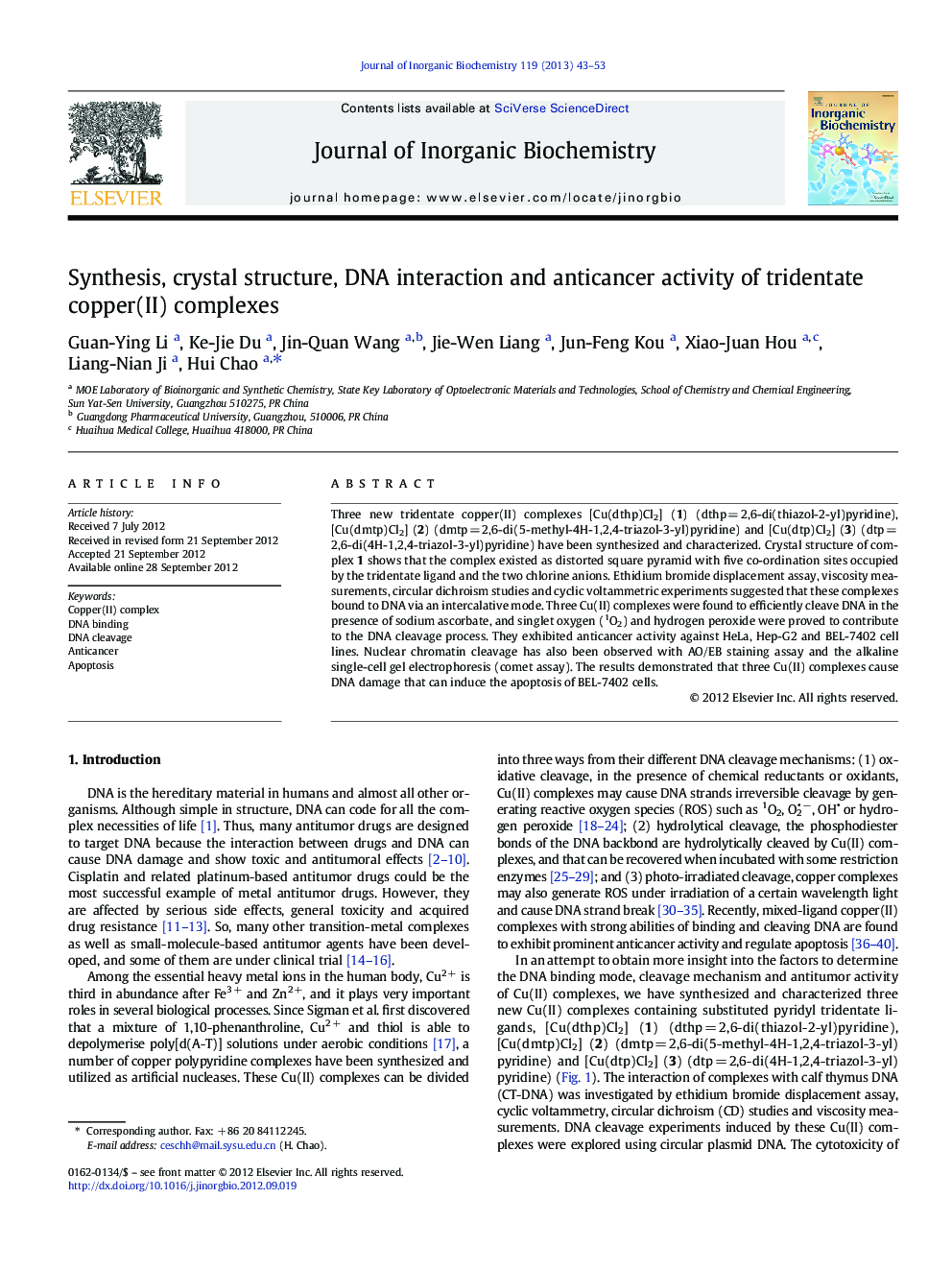| کد مقاله | کد نشریه | سال انتشار | مقاله انگلیسی | نسخه تمام متن |
|---|---|---|---|---|
| 1317688 | 1499468 | 2013 | 11 صفحه PDF | دانلود رایگان |

Three new tridentate copper(II) complexes [Cu(dthp)Cl2] (1) (dthp = 2,6-di(thiazol-2-yl)pyridine), [Cu(dmtp)Cl2] (2) (dmtp = 2,6-di(5-methyl-4H-1,2,4-triazol-3-yl)pyridine) and [Cu(dtp)Cl2] (3) (dtp = 2,6-di(4H-1,2,4-triazol-3-yl)pyridine) have been synthesized and characterized. Crystal structure of complex 1 shows that the complex existed as distorted square pyramid with five co-ordination sites occupied by the tridentate ligand and the two chlorine anions. Ethidium bromide displacement assay, viscosity measurements, circular dichroism studies and cyclic voltammetric experiments suggested that these complexes bound to DNA via an intercalative mode. Three Cu(II) complexes were found to efficiently cleave DNA in the presence of sodium ascorbate, and singlet oxygen (1O2) and hydrogen peroxide were proved to contribute to the DNA cleavage process. They exhibited anticancer activity against HeLa, Hep-G2 and BEL-7402 cell lines. Nuclear chromatin cleavage has also been observed with AO/EB staining assay and the alkaline single-cell gel electrophoresis (comet assay). The results demonstrated that three Cu(II) complexes cause DNA damage that can induce the apoptosis of BEL-7402 cells.
Three copper(II) complexes [Cu(dthp)Cl2] (dthp = 2,6-di(thiazol-2-yl)pyridine), [Cu(dmtp)Cl2] (dmtp = 2,6-di(5-methyl-4H-1,2,4-triazol-3-yl)pyridine) and [Cu(dtp)Cl2] (dtp = 2,6-di(4H-1,2,4-triazol-3-yl)pyridine) were found to efficiently cleave DNA in the presence of sodium ascorbate. They can induce the apoptosis of BEL-7402 cells.Figure optionsDownload as PowerPoint slideHighlights
► Synthesis of complexes [Cu(dthp)Cl2], [Cu(dmtp)Cl2] and [Cu(dtp)Cl2].
► Three Cu(II) complexes bind to DNA in an intercalative mode.
► Cu(II) complexes efficiently cleave DNA in the presence of sodium ascorbate.
► Cu(II) complexes can induce the apoptosis of BEL-7402 cells.
Journal: Journal of Inorganic Biochemistry - Volume 119, February 2013, Pages 43–53